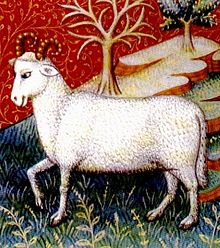Aries (astrology): Difference between revisions
O9837tr7xs (talk | contribs) No edit summary |
|||
| Line 22: | Line 22: | ||
In Sidereal astrology, the sun currently transits the constellation of Aries from 15 April to 15 May (approximately). |
In Sidereal astrology, the sun currently transits the constellation of Aries from 15 April to 15 May (approximately). |
||
Individuals born during these dates, depending on which system of astrology they subscribe to, may be called ''Ariolas'' or ''Ariens''.<ref>Oxford Dictionaries. [http://www.oxforddictionaries.com/definition/Arian?rskey=F3U3Sr&result=1#m_en_gb0039390 "Arian"]. Definition. Retrieved on |
Individuals born during these dates, depending on which system of astrology they subscribe to, may be called ''Ariolas'' or ''Ariens''.<ref>Oxford Dictionaries. [http://www.oxforddictionaries.com/definition/Arian?rskey=F3U3Sr&result=1#m_en_gb0039390 "Arian"]. Definition. Retrieved on 17 August 2011.</ref> |
||
==Associations== |
==Associations== |
||
Revision as of 03:20, 15 March 2013
| Aries | |
|---|---|
 | |
| Zodiac symbol | Ram |
| Duration (tropical, western) | March 20 – April 19 (2024, UT1)[1] |
| Constellation | Aries |
| Zodiac element | Fire |
| Zodiac quality | Cardinal |
| Sign ruler | Mars |
| Detriment | Venus |
| Exaltation | Sun |
| Fall | Saturn |
Aries (♈) /ˈɛəriːz/ (meaning "ram") is the first astrological sign in the Zodiac, spanning the first 30 degrees of celestial longitude (0°≤ λ <30º), which area the Sun transits, on average, between March 21 to April 21 each year.
According to the Tropical system of astrology, the Sun enters the sign of Aries when it reaches the northern vernal equinox, which occurs around March 21. Due to the fact that the Earth takes approximately 365.25 days to go around the Sun, the precise time of the equinox is not the same each year, and generally will occur about 6 hours later each year, with a jump of a day (backwards) on leap years. Since 1900 the vernal equinox date ranged from March 20 at 08h (2000) to March 21 at 19h (1903) (all times UTC).[2]
In Sidereal astrology, the sun currently transits the constellation of Aries from 15 April to 15 May (approximately). Individuals born during these dates, depending on which system of astrology they subscribe to, may be called Ariolas or Ariens.[3]
Associations
In astrology, a planet's domicile is the zodiac sign over which it has rulership. The planet said to be ruler of Aries, is Mars[4]
References
Citations
- ^ Astronomical Applications Department 2011.
- ^ Greenwich, Royal Observatory. "Equinoxes and solstices". ROG learning team. Retrieved 4 December 2012.
- ^ Oxford Dictionaries. "Arian". Definition. Retrieved on 17 August 2011.
- ^ Heindel, p. 81.
Sources
- Heindel, Max (1919), Simplified Scientific Astrology: A Complete Textbook on the Art of Erecting a Horoscope, with Philosophic Encyclopedia and Tables of Planetary Hours (4 ed.), Rosicrucian Fellowship, OCLC 36106074

